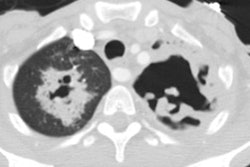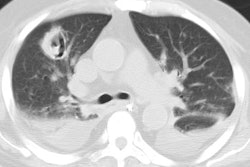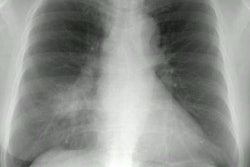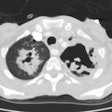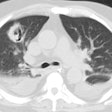Microfilaria:
Clinical:
Brugia malayi, Wuchereria bancrofti, and other microfilaria can produce tropical eosinophilic lung disease which is common in India and the Far East. Patients classically present with wheezing, a non-productive cough that is worse at night, mild fever, and weight loss. The serum and BAL fluid contain high levels of IgE and IgG [1]. Peripheral blood eosinophi counts generally exceed 3000 cells per mL and the average BAL fluid esophil level is 50% [1]. Treatment is with diethylcarbamazine.
X-ray:
Multiple, indistinct, small (under 5mm) nodules can be seen throughout the lungs often resulting in a general haziness or diffuse reticulonodular opacities in the lower lung zones. The abnormalities will change in size and distribution on follow-up radiographs. Adenopathy is not a feature of the infection and the apices are typically spared.
REFERENCES:
(1) Radiographics 2007; Jeong YJ, et al. Eosinophilic lung diseases: a clinical, radiologic, and pathologic overview. 27: 617-639
